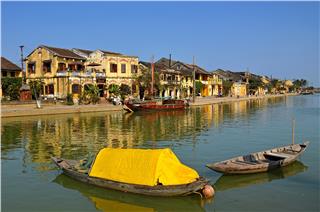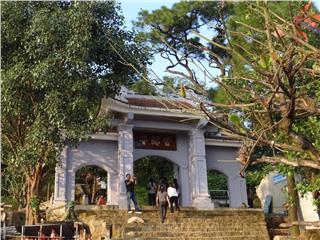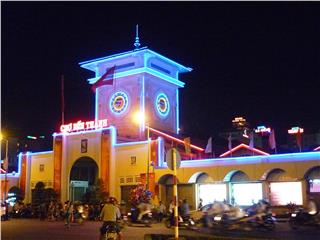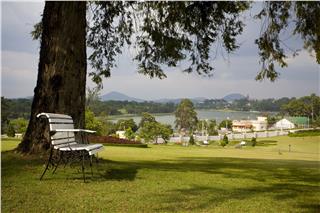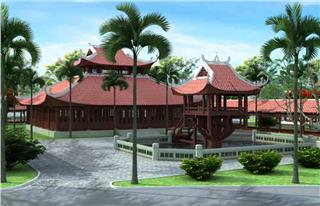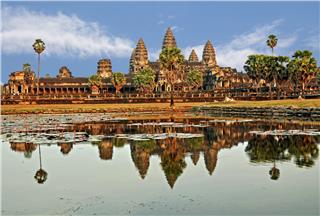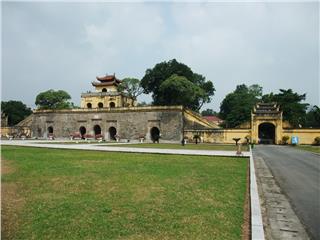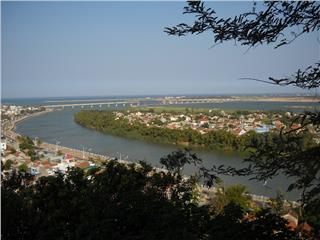Mysterious Dak Lak
Tue, 14 Oct 2014 . Last updated Thu, 25 Jun 2015 08:53
-
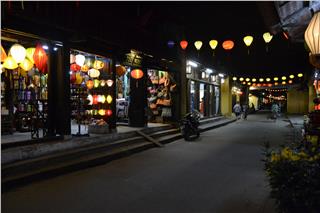 Hoi An travel to New Moon Festival 7231 viewed
Hoi An travel to New Moon Festival 7231 viewed -
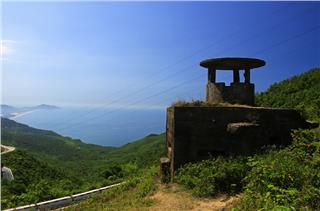 Vietnam War bunker near Da Nang 6705 viewed
Vietnam War bunker near Da Nang 6705 viewed -
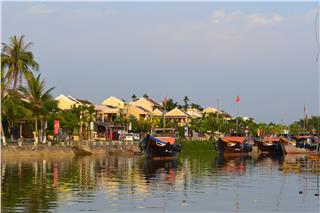 Ancientness of Hoi An ancient town 6618 viewed
Ancientness of Hoi An ancient town 6618 viewed -
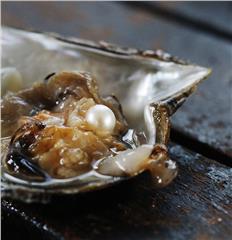 Discovering pearl in Phu Quoc Island 6123 viewed
Discovering pearl in Phu Quoc Island 6123 viewed -
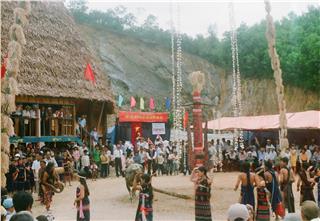 Discovering the Co Tu village in Quang Nam 5980 viewed
Discovering the Co Tu village in Quang Nam 5980 viewed -
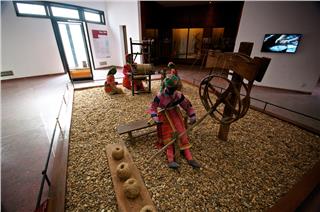 Cultural identity of ethnic groups in Vietnam Museum of Ethnology 5941 viewed
Cultural identity of ethnic groups in Vietnam Museum of Ethnology 5941 viewed -
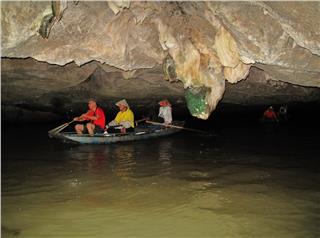 Visit Trang An complex in Ninh Binh 5844 viewed
Visit Trang An complex in Ninh Binh 5844 viewed -
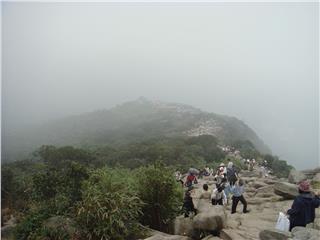 Yen Tu Pagoda and records of Vietnam 5813 viewed
Yen Tu Pagoda and records of Vietnam 5813 viewed -
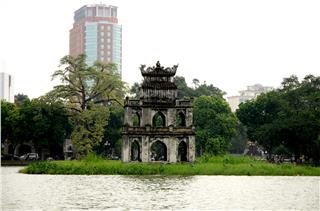 Hanoi Vietnam to Hoan Kiem Lake 5684 viewed
Hanoi Vietnam to Hoan Kiem Lake 5684 viewed
Dak Lak is one of the provinces that have potential in tourism of Vietnam thanks to relics, landscapes and diverse cultural traditions. In particular, Don Village has been known on the world tourism map as traditional hunting and taming elephants.
Sitting on the back of an elephant and watching the scenery of the National Park that is what everyone wants to try when coming here. Yok Don Forest becomes thinner in the dry season. However the trees here are still green for those who enjoy exploring the mountain and forest. Y Elephants are the dearest property of the people here. It is like a family member, a sacred symbol of the highland.
Don Village has long been famous for elephant hunting and taming craft. Legends of brave hunters with impressive achievement have become the pride of the people here. Nowadays, the image of a herd of hundreds of elephants has retreated into the past. However whenever we want to see the elephants, we come to Don Village anyway.
The match consists of 2 rounds, each round lasts 15 minutes. A team has 3 elephants. Like a normal football match, when a team kicks the ball into the net, it will score one point. Despite their big body, the elephants move quickly and cleverly. They make an exciting match. Only when watching the elephants running can we see their bravery and strength. The award is given to the elephant and its talented mahout. People are flocking to the Serepok banks to witness the race of elephants crossing the Serepok. These elephants must cross the river and then come back. They are boasting their great swimming ability. It is not easy for the mahout to control the elephant. We can see the talent of the elephant mahout in this mountainous area.
This is an ancient house of the Lao ethnic people. It was built 123 years ago. It is mainly made of wood, both the walls and the roof. Its roof is made of “ca chit” wood. In the sunny days, the wood is shrunk, creating a bright space for the house. In rainy days, it expands and prevents the water from running into the house. It is great. Ama Kong used to lived here. But the house was made by the King of Elephant, the Ancestor of elephant hunting and taming craft. He did not have sons, so he left the house to his wife’s family. Later the niece of the King of Elephant “caught” Ama Kong and brought him to this house to become her husband.
After Ama Kong’s wife died, he got married to a woman out of the family clan, so he must move to his new wife’s house. The stilt house and all the property were left to his eldest daughter named Me Linh. She is now living in this house. Ama Kong was called the best elephant hunter in the Central Highlands. He died in November, 2012, at the age of 103. He had 4 wives and 22 children.
Tools in this house are used to hunt and tame elephants. They are made of bamboo and rattan. These ropes are made of the skin of the made buffalos which were killed at buffalo stabbing festivals. Some ropes are hundreds of meters long without any knot. That’s thanks to the great talent in spinning of the Mo Mong people. Local people used these ropes to hunt elephants. They catch 3 to 4 year old elephants, not mature ones. When they catch an elephant, they don’t bring it to the village immediately but keep it in the forest to tame it. 2 to 3 months later, they hold an initiation ceremony and take the elephant to the village. While keeping the elephant in the forest, they have to use the V-shaped stocks like this. This is a V-shaped stock. It has many sharp thorns inside. The elephant’s neck is slipped into this stock.
And they tie the elephant to the tree with the rope in the middle and starve it for 3 days. When the elephant tries to escape from the stocks, the rope becomes tense and the V-shaped stocks strangle its neck. The thorns come deep into its neck, making it hurt, thus reducing its strength. The elephant is starved for 3 days to lose its strength, so that they can easily tame it. Then they start taming the elephant.
First, they tame the footsteps of the elephant. The footsteps of a forest elephant are heavy. They don’t follow any rule. The two front legs and two rear legs of the elephant are slipped into 2 stocks that have the shape of number 8. When it is tamed, it footsteps become slower and certain. Every elephant mahout has a rod like this. It is called K’leo. It is an indispensable object of the elephant mahout during the hunting and taming process. The elephants fear this rod. In the house there is an ancient bonze tray which the King of elephant brought from Laos. It is used in elephant festivals such as the village joining ceremony, the good health praying ceremony or a wedding ceremony for the elephants. There is a sword that King Bao Dai gave to K’Leo K’Nul. The sword was broken during a hunting trip.
This area is burying elephant hunters and their relatives. The tomb of the ancestor of the elephant hunting and tamping craft is put here. Earlier, it was higher than the neighboring tomb. However, its roof was ruined by lightning. As you can see, many graves here have been damaged but they aren’t restored, because according to the custom of the local people, after “bo ma” ritual, they will not care for these graves any more as the relationship between the living and the dead has ended. They don’t have the cult of ancestor worship like the Kinh people.
The real name of the ancestor of the elephant hunting and tamping craft is N’Tua K’Nul. He was born in 1828 and died in 1938 at the age of 110. He hunted 300 elephants. In 1861, he hunted a white elephant and then he gave it to a Thai King. To thank him, the Thai King granted him valuables. In particular, he was granted with the title Khua Ju Nop that means the King of Elephant in the Thai and Lao languages. And this is his tomb. 3 years after his death, his nephew, whose tomb is next to his, held the “bo ma” ritual for him. The tomb of R’Leo K’Nul is here. King Bao dai held the “bo ma” ritual for R’Leo K’Nul. R’leo K;Nul contributed to establishing a royal elephant team and he also gave the King a white elephant. Therefore, to pay tribute to him, King bao Dai personally held the “bo ma” ritual for him.
The tombs that are carved with images of elephants or 4 pairs of elephants’ tusks made of wood are the graves of elephant hunters. The graves that are carved with the image of 4 G’ru birds are the tomb of women in the elephant hunter’s family. She may be his mother, his sister or his grandmother. The image of 4 G’ru birds shows that the woman has great power in the family and her family is very rich. Here if you see a grave with a pole of cloth like this. A “neu” tree (a tree for Tet days). Right the neu tree. It has gone through the “bo ma” ritual and is called the charnel-house. The grave nearby has a metal roof to shield it from rain and sunshine. It has not gone through the “bo ma” ritual and is called “rice” house. According to the custom of the people here, before the “bo ma” ritual is held, the dead has not come to another world. Therefore, the living must bring rice to them every day and feed them. They don’t leave the rice there and burn incense as the Kinh people do.
“Bo ma” ritual is held 1 to 3 years after the dead. It depends on each family. Now they even hold the ceremony 1 month later. The family must prepare feast for the whole village. Villagers gather here to enjoy food until the ceremony ends. The earlier the ceremony is held, the sooner the soul of the dead is saved. The “bo ma” ritual is not only for elephant hunters but also for the ordinary people. During the ritual, all the offerings are made here, not prepared at home. For example, the pig, kitchen, buffalo or cow is killed here to make food. As the local people thought, if they prepare the offerings at home, that means they take evils to home. Therefore, they do all the preparations here. Before coming home, the participants to the “bo ma” ritual must bathe in the river to send the evils and ghosts as well as the bad luck away. They fear that the evils will follow them home.
Cau Treo tourism area is situated in Don Village. It attracts visitors with a system of suspension bridges crossing streams and the poetic scenery. These suspension bridges are special. They cross the streams and go through “si” (ficus) trees. It is cool when we walk under the shade of these trees. The sunshine and wind of the highland region seem to be eased here.
The most interesting in the Central Highlands Vietnam is the exciting sound of gongs. The sound has been associated the birth to the death. It is the means to connect human with gods and among people. The jars of “can” wine are as full as the love of the local people for visitors. It is a pity if you come to Don Village without enjoying “can” wine. There are the bamboo tubes to cook “lam” rice, a popular dish of ethnic groups in Vietnam. They contain sticky rice grown on terraced fields, a typical type of rice in this region. We put the rice into the bamboo tube and then bake it. Cooking “lam” rice is like cooking ordinary rice. We use the bamboo tubes instead of pots. The way of cooking “lam” rice shows the harmony with nature of the people in the Central Highlands.
Source: VTC10 - NETVIET

